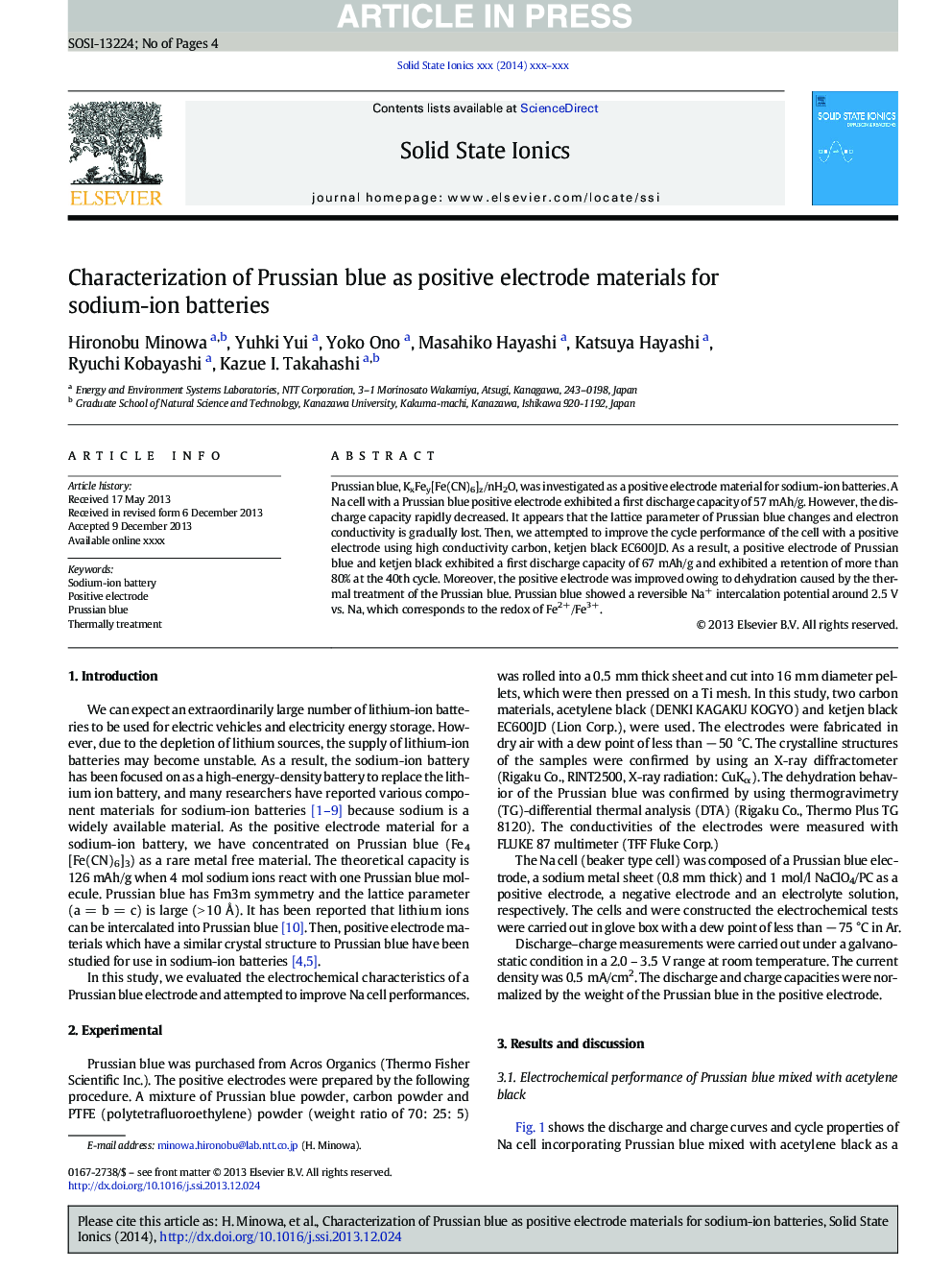| Article ID | Journal | Published Year | Pages | File Type |
|---|---|---|---|---|
| 7746147 | Solid State Ionics | 2014 | 4 Pages |
Abstract
Prussian blue, KxFey[Fe(CN)6]z/nH2O, was investigated as a positive electrode material for sodium-ion batteries. A Na cell with a Prussian blue positive electrode exhibited a first discharge capacity of 57 mAh/g. However, the discharge capacity rapidly decreased. It appears that the lattice parameter of Prussian blue changes and electron conductivity is gradually lost. Then, we attempted to improve the cycle performance of the cell with a positive electrode using high conductivity carbon, ketjen black EC600JD. As a result, a positive electrode of Prussian blue and ketjen black exhibited a first discharge capacity of 67 mAh/g and exhibited a retention of more than 80% at the 40th cycle. Moreover, the positive electrode was improved owing to dehydration caused by the thermal treatment of the Prussian blue. Prussian blue showed a reversible Na+ intercalation potential around 2.5Â V vs. Na, which corresponds to the redox of Fe2Â +/Fe3Â +.
Related Topics
Physical Sciences and Engineering
Chemistry
Electrochemistry
Authors
Hironobu Minowa, Yuhki Yui, Yoko Ono, Masahiko Hayashi, Katsuya Hayashi, Ryuchi Kobayashi, Kazue I. Takahashi,
